From a middle-class, white-collar white cis-woman to other middle-class white collar white cis-women.
When the call came from an unknown number, I answered because I was waiting for a tow-truck to come and remove a rusted-on flat tire and was hopeful it was the driver calling with an estimated time.
“Hiya, Sweetie!” I heard in a Texas twang.
My body instantly tightened and my adrenaline started running.
“Can I help you?” I asked, with obvious impatience in my voice.
“This is your tow-truck driver, sweetie! I’m just calling to let you know I’ll be there in about 15 minutes.”
“Fine, thank you.” And I hung up.
 Flash back to earlier in the week, when we had needed an electrician to come do some work on the house. I work at home, so it makes sense that I am the person who handles this sort of thing. Plus, I knew what needed to be done. The guy who came was a former marine and we chatted amicably a bit. After a few minutes, though, he came over and tapped the buttons that I always wear.
Flash back to earlier in the week, when we had needed an electrician to come do some work on the house. I work at home, so it makes sense that I am the person who handles this sort of thing. Plus, I knew what needed to be done. The guy who came was a former marine and we chatted amicably a bit. After a few minutes, though, he came over and tapped the buttons that I always wear.
“Before I start, I have a problem with this one” he said, tapping the Black Lives Matter pin on my clavicle.
I froze. Then we engaged in a conversation around why I wear the pins. I was tense the whole time – this guy was in my house and was definitely capable of overpowering me. Thankfully, it was nothing like the story Sarah Suze told on twitter of trying to sell her dryer, but you never know when these things can turn, do you? Eventually, I left the conversation and went to try to do something else while he did his work. I was exhausted when he left.
After I hung up the phone with the tow-truck driver, I turned to my spouse. “You have to handle this,” I told him. “I just can’t.”
He looked at me gently. I am usually the one who interfaces with people. I am the outgoing and friendly one. And I just couldn’t. I was so thankful he was around. And I was so thankful I wasn’t stuck on the side of the road somewhere by myself, with this my only option.
When the truck pulled up, my spouse went out to to talk to them. First, an older Black man hopped out of the passenger side. And then a very friendly Latinx man exited the driver side. He was obviously the one with the Texas twang who had called me “sweetie.”
And all my fear disappeared.
I went outside, told them what was going on, and they removed the rusted on tire. They went on their way, I went mine, and I have been thinking about this encounter ever since.
Why did my fear disappear as soon as I saw who the men were? As soon as I saw they weren’t white.
The answer, which it took me a while to come to because I am a bit slow sometimes, is power. As a middle-class , white-collar white cis-woman, I have more power than those guys. In this way, I am a beneficiary of the systems of white supremacy ingrained in this country.
But the power that I have isn’t absolute, as I was reminded with the electrician. It is proximal power – power that comes from being white, being in proximity to those with the most power: white men.
Sometimes, we white women mistake this proximal power for our own inherent power. We align ourselves with the white men, with the oppressors, rather than with others who are oppressed. As Rebecca Traister aptly points out “White women, who enjoy proximal power from their association with white men, have often served as the white patriarchy’s most eager foot soldiers.” So true.
In Right-Wing Women, Andrea Dworkin observed that “From father’s house to husband’s house to a grave that still might not be her own, a woman acquiesces to male authority in order to gain some protection from male violence. She conforms, in order to be as safe as she can be.”
But when white men choose, they can take white women’s proximal power away. We see this most starkly with rape culture, where they protect their own and put the onus on a woman not to be raped rather than on a man not to rape, but this is not the only way it manifests. Mansplaining, interrupting, gaslighting, sea-lioning – all these bullying techniques, techniques designed to “keep women in their place” are ways that white men strip away the proximal power of white women.
White women having proximal power that can be taken away puts us in a perpetual state of cognitive dissonance, which is exploited by white men’s divide and conquer tactics. When we choose the illusion of safety and proximal power of our whiteness over the liberation of others, when we align ourselves with those in power, we forget that our proximal power is only that which is allowed. We forget that when we try to claim our power it is easily “written off as loudmouthed hysteria, or the dubious ravings of pussy-hatted suburbanites with itchy Etsy trigger fingers” (Traister). We are labeled nasty, impolite arrogant women who persist despite being told to be silent.
Our proximal power, which we think will protect us, often does the exact opposite. In the hierarchy of women, Dr. Christine Ford is at the top: white, cis, hetero, professional, well-educated. And white men ripped the carpet out from under her, didn’t they? We white women benefit from systems like capitalism, colonization, and white supremacy but these systems were not made to give us our own power and so we are easily ignored, dismissed as hysterical.
And yet, look at what Dr. Ford’s courage has inspired! Men like Trump and McConnell have no idea the beast that they have unleashed, gliby commenting that it will all blow over. They have no idea that white women are waking to the illusion of proximal power and instead claiming our real power, which is a power-with instead of a power-over.
Some of us are a bit late to this party. Women of color have been telling us this for a long time, but we haven’t listened. Many of us haven’t felt as though we needed to listen because we thought the white men would protect us. We were wrong.
Our real power comes when align ourselves with others, like women of color, who are fighting for liberation. It comes when we stop seeking or expecting protection, much less permission, of white men. When we stop apologizing. Stop being polite, stop trying to keep the peace. Stop all the things that keep us in our place. We gain real power, power-with, when we resist the divide and conquer tactics and align ourselves with the liberation of others.
So what do we do? Once we realize our proximal power is so easily taken away, how do we begin to claim a more true, whole power-with?
It begins with listening to those who’ve been in this fight longer than us. Women of color, particularly Black women, know the landscape – they know how to sustain themselves over the long haul that is ahead. Listen to women of color, immigrants, and those from other marginalized communities.
It means standing up for ourselves. When that electrician tapped my pins, rather than trying to engage him in a conversation I should have loudly said that his touching me was unacceptable and asked him to leave. Scary stuff, I know, but how many times do we just accept it when we are cat-called, groped on the bus, mansplained on social media? We need to stop just saying “Oh, that will happen” and start enforcing our boundaries loudly and unignorably.
It means becoming a tribe with other women, no matter their age, race, creed, socio-economic status, etc. When we see another women being harassed or belittled, we must clearly, strongly and publicly align ourselves with her, whether that is in real life or online. It means that, should we decide to #WomensStrike, we support those of us who are unable to rather than belittling them and further alienating them.
It means being humble when other women, particularly ones from marginalized communities, point out our growing edges. We have much to learn.
It means expanding our definition of allies: people across the gender spectrum, people across the sexual orientation spectrum, people with disabilities. This is intersectional work, and we need one another. Our liberation is all tied up together.
Finally, we need to stop making excuses for the male-identified people we love. We need to bring them along on our journeys and help them learn how to be a part of the solution instead of part of the problem. This isn’t always easy – they have even more unlearning to do than we do, more privilege that is at stake. They are often fragile and emotional and may feel attacked when we stand up for ourselves. There are some great articles online on how to do this.
When we do this, when we realize who our true allies and accomplices are in this fight, when we learn to listen with humility and allow ourselves to grow, then we will recognize the sham of proximal power and embrace our true power and use it for the liberation of all.
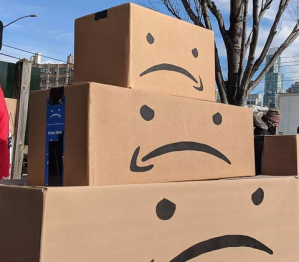
 Facebook is proving more difficult. So much is linked to my facebook account, and so much history. And actions/events in the community. And yes, I definitely have FOMO (fear of missing out). But I am not a commodity, and I don’t want to be facebook’s product anymore. I don’t want my images used by them for facial recognition. I don’t want videos I post of protests and rallies to be used to bring criminal charges against the protestors. I don’t want to be a part of a “community” where lying is okay and shrugged off.
Facebook is proving more difficult. So much is linked to my facebook account, and so much history. And actions/events in the community. And yes, I definitely have FOMO (fear of missing out). But I am not a commodity, and I don’t want to be facebook’s product anymore. I don’t want my images used by them for facial recognition. I don’t want videos I post of protests and rallies to be used to bring criminal charges against the protestors. I don’t want to be a part of a “community” where lying is okay and shrugged off. 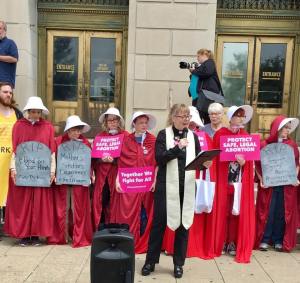



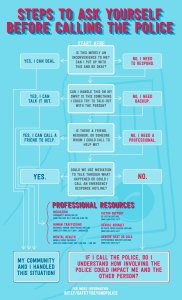
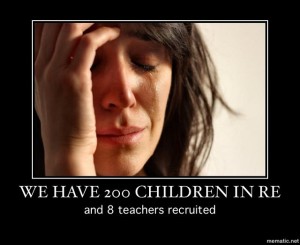

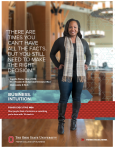


 As I passed through security, something unique happened. An older man looked at me, smiled, and asked what denomination I was with. For a year now,
As I passed through security, something unique happened. An older man looked at me, smiled, and asked what denomination I was with. For a year now,